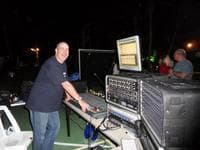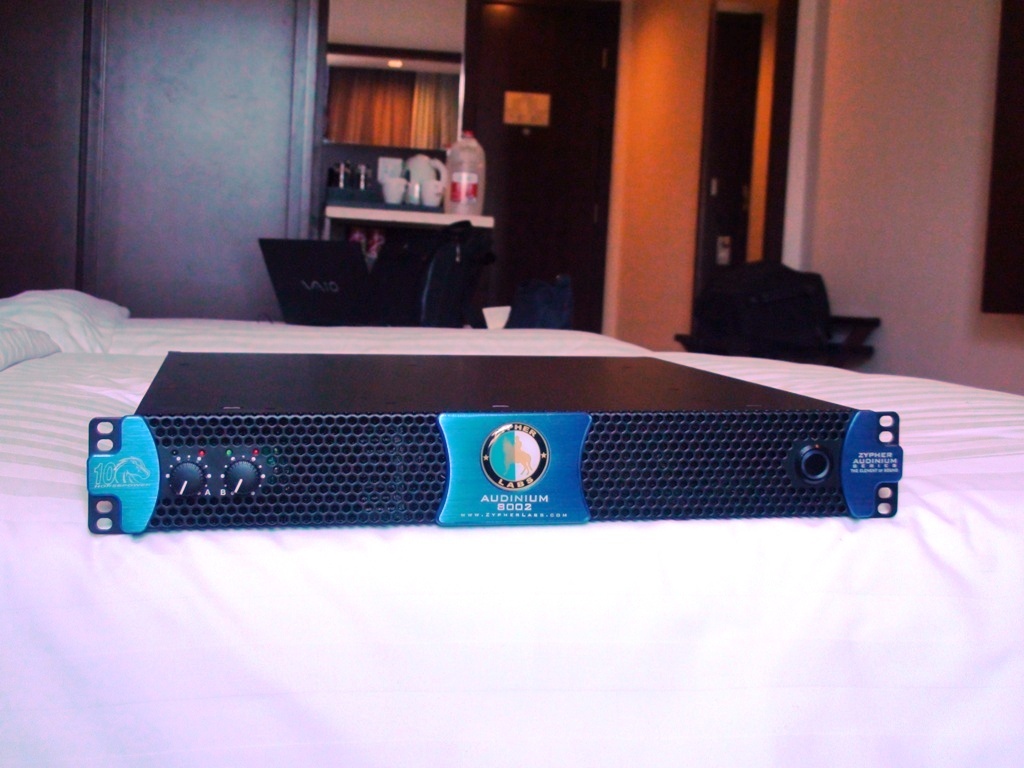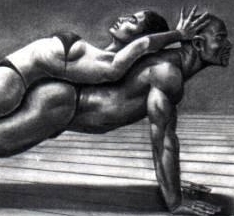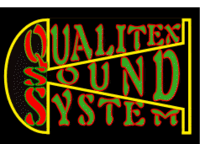- Posts: 43
- Thank you received: 1
Toroidal[Heavyweight] Vs SMPS[Lightweight] amplifiers
- Daz
-

- Offline
- Senior Member
-

Conventional power supplies use massive caps usualy 10000uF+ for each cap. Wheras SMPS units tend to use smaller caps that are in theory maintained by recharging far more often (100Hz for conventional and usualy several thousand Hz for SMPS) The smaller caps are less capable of supplying high peak/surge currents. This would seem to suggest that the peak current driving ability of a SMPS unit is far more dependent on the supply as opposed to the resovior. Perhaps this could be why the SMPS units tend to hit a brick wall where there just isnt anything left in reserve.
I am assuming that you cant realy use the larger caps because the frequencey that the SMPS is operating at would not allow enough charging time between cycles (Or would require excesive Mark-space-duty cycle time to do so with PWM) and would result in the caps running undrcharged most of the time?
Daz
Please Log in or Create an account to join the conversation.
- ΚΔΠШΔЯ
-
 Topic Author
Topic Author
- Offline
- Premium Member
-

- Posts: 96
- Thank you received: 0
levyte357 wrote:
Kanwar wrote:
Also Kanwar, please inform us if "anyone" PMs/emails you racist messages on "this forum". smiley2
"They" won't dare here on this very forum, as long as you are present. :lol:
Please Log in or Create an account to join the conversation.
- ΚΔΠШΔЯ
-
 Topic Author
Topic Author
- Offline
- Premium Member
-

- Posts: 96
- Thank you received: 0
Daz wrote: I am assuming that you cant realy use the larger caps because the frequencey that the SMPS is operating at would not allow enough charging time between cycles (Or would require excesive Mark-space-duty cycle time to do so with PWM) and would result in the caps running undrcharged most of the time?
Daz
More capacitance on secondary side will over load the power switching devices in smps. Therefore in order to keep the current well with in the rating of semiconductor devices the inrush charging current is often compromised by putting less capacitors.
This would seem to suggest that the peak current driving ability of a SMPS unit is far more dependent on the supply as opposed to the resovior. Perhaps this could be why the SMPS units tend to hit a brick wall where there just isnt anything left in reserve.
Yes, this is correct upto some extent, the peak power capability comes from more capacitance only.
Please Log in or Create an account to join the conversation.
- Daz
-

- Offline
- Senior Member
-

- Posts: 43
- Thank you received: 1
So the general thoughts that lightweight amps are possibly best suited to upper bass/mid and top use would seem to ring true. While conventional heavyweights are better at supplying the large peak currents required for Sub base low frequency work.
Nice to know the theory works smiley20
Daz
Please Log in or Create an account to join the conversation.
- tre4u2nv
-

- Offline
- Junior Member
-

- Posts: 33
- Thank you received: 0
smiley32 :shh:Daz wrote: I also wonder how mutch the instantainious current driving ability of SMPS units is effected by the size of the resovior capacitors used. :idea:
Conventional power supplies use massive caps usualy 10000uF+ for each cap. Wheras SMPS units tend to use smaller caps that are in theory maintained by recharging far more often (100Hz for conventional and usualy several thousand Hz for SMPS) The smaller caps are less capable of supplying high peak/surge currents. This would seem to suggest that the peak current driving ability of a SMPS unit is far more dependent on the supply as opposed to the resovior. Perhaps this could be why the SMPS units tend to hit a brick wall where there just isnt anything left in reserve.
I am assuming that you cant realy use the larger caps because the frequencey that the SMPS is operating at would not allow enough charging time between cycles (Or would require excesive Mark-space-duty cycle time to do so with PWM) and would result in the caps running undrcharged most of the time?
Daz
IT TAKES ALLSORTS
Please Log in or Create an account to join the conversation.
- Daz
-

- Offline
- Senior Member
-

- Posts: 43
- Thank you received: 1
Has anyone ever built High power single rail amps that just run with rectified 240V mains power and so don't need a transformer at all?
Would it be possible to build a lower frequency AC output switchmode/regenerator that could run at say 400Hz (Used on aircraft to reduce the size of high current equipment) and use it to drive a smaller TX based conventional PSU with big resovior caps. Could this give us something more lightweight but with the grunt required to drive sub frequency drivers? :idea:
Perhaps for realy big stufF a custom set of amps with 400Hz ( So lightweight TX's) conventional PSU's to fit into a rack with a dedicated 50Hz to 400Hz mains regenerator? :idea:
Daz
Please Log in or Create an account to join the conversation.
- ΚΔΠШΔЯ
-
 Topic Author
Topic Author
- Offline
- Premium Member
-

- Posts: 96
- Thank you received: 0
Daz wrote: Just wondering again.
Has anyone ever built High power single rail amps that just run with rectified 240V mains power and so don't need a transformer at all?Scary I know but the amp would weigh in at several KG's less.
Would it be possible to build a lower frequency AC output switchmode/regenerator that could run at say 400Hz (Used on aircraft to reduce the size of high current equipment) and use it to drive a smaller TX based conventional PSU with big resovior caps. Could this give us something more lightweight but with the grunt required to drive sub frequency drivers? :idea:
Perhaps for realy big stufF a custom set of amps with 400Hz ( So lightweight TX's) conventional PSU's to fit into a rack with a dedicated 50Hz to 400Hz mains regenerator? :idea:
Daz
Direct mains based amplifiers have only one flaw which is absence of electrical isolation, other than that its a good approach to reduce the weight.
Making a 400hz AC regenerator is not worthwhile, better make a smps 1.5X times the amp power and do justice to sound quality.
Please Log in or Create an account to join the conversation.
- AudioDreemz
-

- Offline
- New Member
-

- Posts: 9
- Thank you received: 0
It wouldnt work well due to the cycle of direct mains being too low and would heat up the components mighty fast plus at that way it would be a bit hard for (Class H) design since those use multi voltage for efficiency as opposed to conventional AB so you would end up with a large amplifer with huge heatsinks and low output power.Daz wrote: Just wondering again.
Has anyone ever built High power single rail amps that just run with rectified 240V mains power and so don't need a transformer at all?Scary I know but the amp would weigh in at several KG's less.
Would it be possible to build a lower frequency AC output switchmode/regenerator that could run at say 400Hz (Used on aircraft to reduce the size of high current equipment) and use it to drive a smaller TX based conventional PSU with big resovior caps. Could this give us something more lightweight but with the grunt required to drive sub frequency drivers? :idea:
Perhaps for realy big stufF a custom set of amps with 400Hz ( So lightweight TX's) conventional PSU's to fit into a rack with a dedicated 50Hz to 400Hz mains regenerator? :idea:
Daz
Please Log in or Create an account to join the conversation.
- qss
-

- Offline
- Junior Member
-

- Posts: 35
- Thank you received: 0
Please Log in or Create an account to join the conversation.
- Sinfinity
-

- Offline
- Premium Member
-

- Posts: 83
- Thank you received: 5
Please Log in or Create an account to join the conversation.